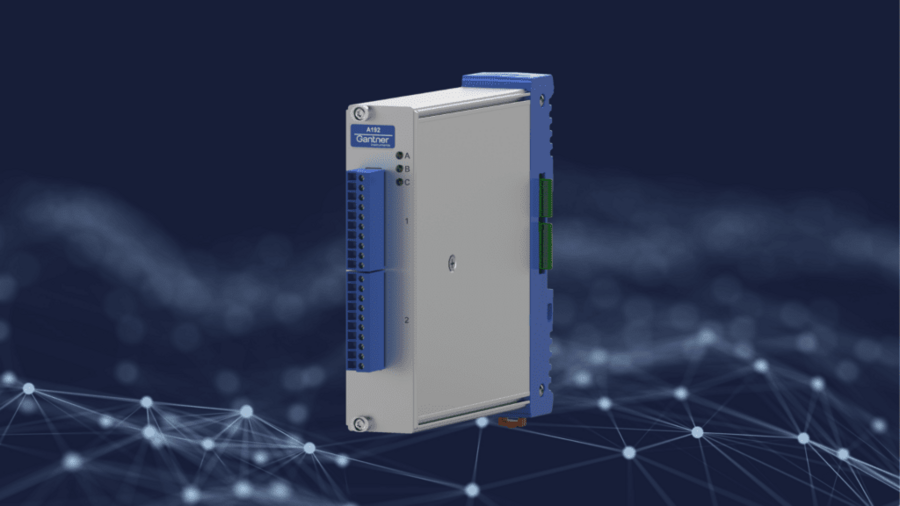The Q.series X A192 is the newest, most flexible, and capable I/O module in the Q.series X product line. The A192 has been designed with critical (aero)space testing applications in mind, for instance static fire test of rocket engines, structural health monitoring, fatigue validation, and iron bird testing. The module’s universal analog input can be configured for either voltage, current, resistance, RTD, thermocouple, strain gage or IEPE measurement. To allow for greatest flexibility in selecting the appropriate sensors for your test bench, the A192 provides fully programmable transducer excitation in combination with an adjustable input range and amplifier gain (automatic).
Like any of the Q.series X modules, various communication busses are supported; Ethernet, EtherCAT and LocalBus. In addition, the A192 includes an analog output to share the measurement signal with, for example, a control command system or redundant data logger. The two onboard digital I/O channels are freely configurable and can be used to communicate status to the test bench emergency system. TEDS can be added to simplify system setup, self-check or for sensor traceability. And not least of all, the module comes with three-way galvanic isolation up to 500 VDC. All this makes the A192 the most versatile measurement module available for your mission-critical ground test applications.

Key Features:
- Multipurpose I/O module with 1-Ch at 100 kS/s with programmable Sensor Excitation and Analog Output
- Voltage ranges ±10 V, ±5 V, ±1 V, ±100 mV, ±10 mV
- Current range ±25 mA
- IEPE/ICP with programmable sensor excitation (1 mA to 12 mA in steps of 10 µA)
- Thermocouple
- Pt100/Pt100
- Resistance
- Strain Gage (quarter, half, full) with programmable sensor excitation (1 V to 12 V in steps of 1 mV, continuous short circuit proof)
- 1 Analog output channel
±10 VDC or ±22 mA - 2 Digital Inputs or Outputs
- Status, trigger, tare, alarm
- Standard 10-pole or customized input sockets
Find out more about our products here:

More articles
Changing demands within Automotive Testing – Webinar
Want to know more about changing demands within Automotive Testing?
Read more...Gantner Instruments at China Wind Power 2025
China Wind Power (CWP) has become the definitive benchmark for the global wind industry, showcasing the latest advances driving efficiency, durability, and sustainability. From October 20–22, 2025, the exhibition will return to the China International Exhibition Center (Shunyi Hall) in Beijing, covering more than 120,000 square meters of technologies and solutions for the energy transition.
Read more...China International Battery Fair 2023
The path to reduced battery test bench development cycles, more accuracy, and better high voltage isolation starts with Gantner Instruments at China International Battery Fair in Shenzhen, China, from May.16 to May.18, 2023.
Read more...Gantner delivers DAQ for Open Rotor Engine
Gantner Instruments has delivered its Q.series data acquisition system for a major research programme exploring Geared Pusher Open Rotor engine designs, with the goal of achieving a 20% reduction in fuel consumption and CO2 emissions.
Read more...